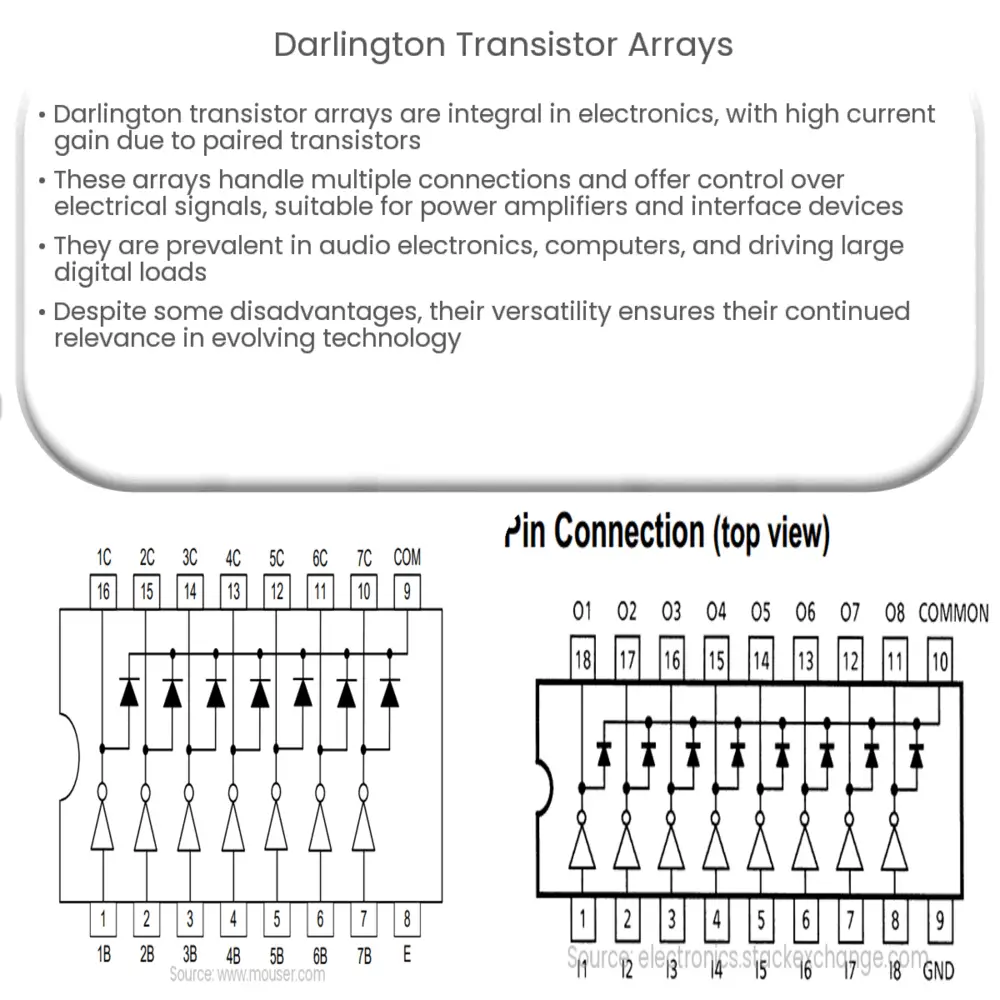Explore the intricacies of Darlington Transistor Arrays, their unique features, applications, advantages, and future prospects in the electronics industry.

Darlington Transistor Arrays: An Overview
The world of electronics has always been one of fascinating concepts, intricate circuitry, and complex components, with one such component being the Darlington transistor array. In the broad spectrum of electronic components, this particular device plays an integral role.
Understanding Transistors
Before delving into the specifics of Darlington transistor arrays, it is crucial to understand what transistors are. A transistor is a fundamental electronic device that regulates current or voltage flow and acts as a switch or gate for electronic signals. Invented in 1947, it has since become the foundational building block in all modern electronic systems.
What are Darlington Transistors?
Named after its inventor, Sidney Darlington, a Darlington transistor consists of a pair of bipolar junction transistors (BJTs) that are interconnected in such a way that the current amplified by the first transistor is amplified further by the second one. This unique configuration provides very high current gain from a relatively low base current and finds its use in several applications, from audio amplifiers to motor controls.
Understanding Darlington Transistor Arrays
Building on this concept, a Darlington transistor array is a collection of Darlington transistor pairs. Typically packaged as an integrated circuit (IC), these arrays can handle multiple input-output connections. The transistor pairs in an array are often integrated with input and output stage circuitry, enabling a high degree of control over electrical signals. Transistor arrays like these allow for complex functionalities within compact, robust electronic devices.
Key Features
- The most notable characteristic of a Darlington transistor array is its incredibly high current gain, a product of the arrangement of the transistor pairs.
- They are highly efficient, capable of performing high power switching applications, and suitable for usage in the design of relay drivers, motor drivers, and power output stages.
- Being available in a variety of configurations, these transistor arrays offer a high degree of flexibility in electronic design.
Applications of Darlington Transistor Arrays
Their high current gains make Darlington transistor arrays ideal for a wide range of applications. They are commonly employed in the creation of power amplifiers and as interface devices between low-level logic circuits and high-power devices such as motors, relays, displays, lamps, and solenoids. Furthermore, in the realm of audio electronics, they often form a vital part of the output stage of audio power amplifiers.
Darlington Transistor Arrays in the Digital World
In the digital world, Darlington transistor arrays are a go-to solution when driving large loads, such as printers, display drivers, and motor drivers. They are also widely used in the computer industry, particularly in the construction of computer logic arrays.
Advantages and Disadvantages
Like any electronic component, Darlington transistor arrays come with their own set of advantages and disadvantages. On the plus side, their high current gain and the ability to drive large loads are major selling points. However, they also have a higher base-emitter voltage, and thus a greater voltage drop, than single transistors, which can be a drawback in some applications. Despite this, the advantages they offer often outweigh the potential disadvantages, making them a valuable addition to many electronic circuits.
Future Prospects
As technology continues to advance, the demand for components like Darlington transistor arrays that can handle high-power applications efficiently is likely to grow. Particularly in the field of renewable energy and electric vehicles, where the need for efficient power regulation and control is paramount, these components could play an increasingly significant role.
Conclusion
In summary, Darlington transistor arrays have carved out a prominent place in the landscape of electronics due to their unique characteristics and versatile applications. From audio amplifiers to motor controls, their influence permeates a broad array of electronic devices. Despite their few drawbacks, they remain a staple in the design and operation of many electronic circuits. Looking towards the future, it’s clear that as the world becomes more technologically advanced, the value of these versatile and high-performing components will only continue to grow.

